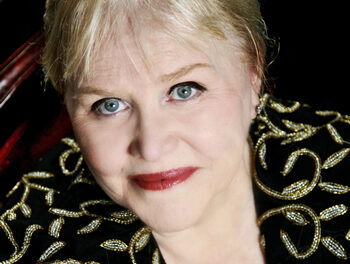Eastern North Carolina, and Greenville in particular, benefits from an ongoing influx of musical talent, generally related to the East Carolina University School of Music and the university’s various concert series. But these talents though edifying are usually transient, and special appreciation is due the gifted members of the community who year after year contribute to the cultural and spiritual life of the city they call home. St. Paul’s Episcopal Church in Greenville hosted just such an event on Sunday, February 17, as the choirs of St. Paul’s and Peace Presbyterian Church of Winterville presented “A Lenten Concert.”
The concert began with the William Mathias (1934-1992) settings of the Magnificat and Nunc Dimittis, written for the 1971 dedication of the organ in the Chapel of Jesus College, Cambridge. Sung by the St. Paul’s choir and assisted by Samantha Koch at the Perkins & Wells Memorial Organ, C.B. Fisk, Op. 126, the dramatic work calls for brief flashes of the instrument’s dynamic capabilities and subdued accompanimental material, and Ms. Koch’s playing shone in both contexts. The choir’s diction and intonation were impeccable, and under the direction of organist-choirmaster Andrew Scanlon, the highly reverberant architecture was a responsive asset.
The two Lenten Motets by Richard Farrant (d. 1581), “Call to Remembrance” and “Hide Not Thy Face,” sung by the Peace Presbyterian Church choir, were a fitting interlude between the twentieth-century harmonies of the Mathias and the Baroque sensibilities of the upcoming Bach cantata. These a cappella works showcased the lovely voices of this smaller ensemble, led by their director Peggy Vaughan.
The central work of the evening was an early cantata by J.S. Bach, Nach dir, Herr, verlanget mich, S. 150. In this work, the chorus plays a prominent role, and the orchestral scoring is light. The combined choirs, conducted by Ms. Peggy Vaughan, were accompanied by six strings, bassoon and organ. The opening sinfonia, followed by the alternating sections typical of such a work, included one brief aria and a trio, both well sung. There were moments when greater dynamic contrast would have been effective, but the overall impression was of a moving and informed rendering of the work.
For this event the musicians were situated at the back of the nave, behind the audience. While there are valid reasons for such a decision, it generated a variety of audience responses. As the performance began, many turned in their seats to watch, others shifted alternately — one practical individual even turned his chair completely around — and the compliant among us (with memories of maternal elbows enforcing proper church behavior) faced forward until the closing applause. Those with greater foresight sat in the more-distant transepts. The experience for those who turned and those who did not could not have been the same. Some sat in the manner God intended for the ear’s best capture of sound – facing it. Others heard it once removed. While the event was advertised as a concert, and the program so titled, the opening remarks offered it as a time for meditation. Clarity of purpose may have enhanced what was in all other respects a meaningful and enjoyable presentation.











